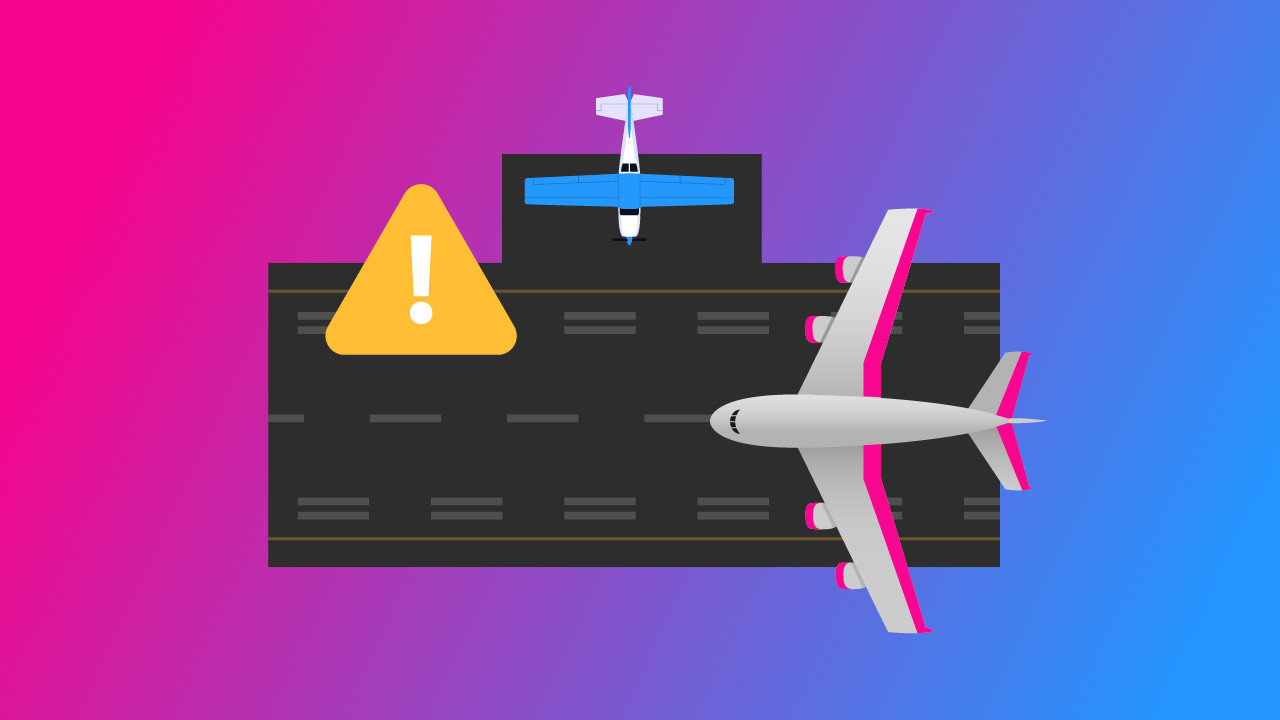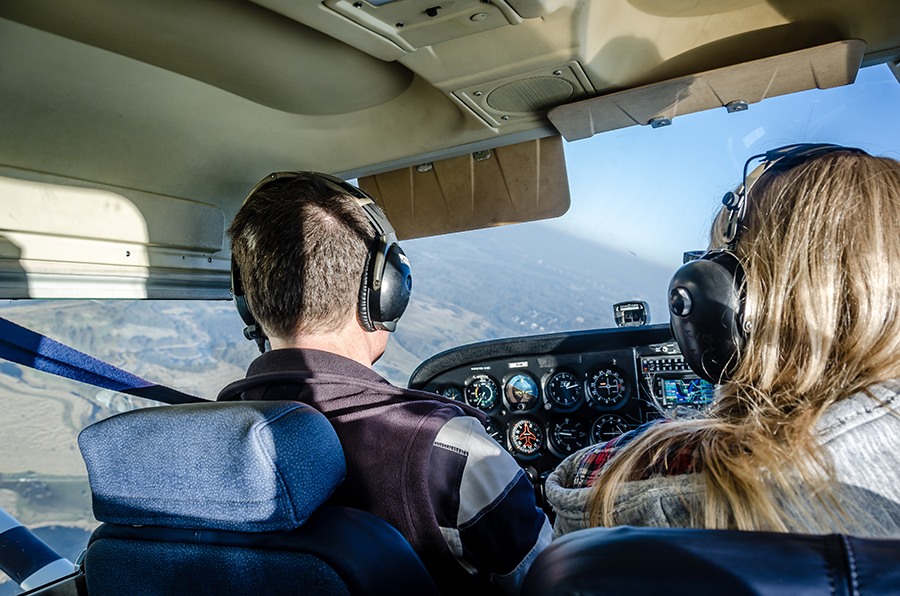-
Key Takeaways
-
Tips to Avoid Pilot Deviations
- Communicate Clearly With ATC
-
Maintain Situational Awareness
- Plan Your Flight Thoroughly
- Use a GPS for Extra Awareness
- Use Autopilot, but Stay Observant
- Create Buffers and Avoid Complacency
-
What Happens When You Cause a “Pilot Deviation”
-
The FAA Pilot Deviation Enforcement Process
-
FAQs on Pilot Deviations and Runway Incursions
-
Conclusion
Two mistakes you’ll want to try your best to avoid are a pilot deviation or a runway incursion.
A pilot deviation happens when you violate an FAA regulation or an instruction from Air Traffic Control (ATC).
This could be caused by landing without clearance, straying from an assigned altitude, or any number of other errors.
Pilot deviations are incredibly stressful. In severe deviation cases, they can lead to dangerous situations or even accidents. So, you’ll definitely want to avoid these issues in order to maintain your record.
In this guide, we will help you understand how to prevent pilot deviations and what you can expect if ATC ever calls you with the dreaded “possible pilot deviation” warning.
Key Takeaways
- Clear communication with ATC is essential for avoiding pilot deviations.
- Situational awareness prevents errors that lead to runway incursions.
- Pre-flight planning reduces surprises and supports safer flight operations.
- Using GPS and autopilot can enhance focus and help prevent deviations.
Tips to Avoid Pilot Deviations

Communicate Clearly With ATC
Your safety and the safety of everyone around you relies on clear communication with ATC. If you’re not 100% sure about an instruction, go ahead and ask for clarification. Don’t hesitate or be scared to ask questions or repeat instructions back to make sure you got it right.
If you haven’t flown in a while or feel rusty, spend some time reviewing radio communication procedures.
Even practicing with a flight simulator and online ATC services like VATSIM can help to sharpen your skills and get you ready for the real thing again.
Maintain Situational Awareness
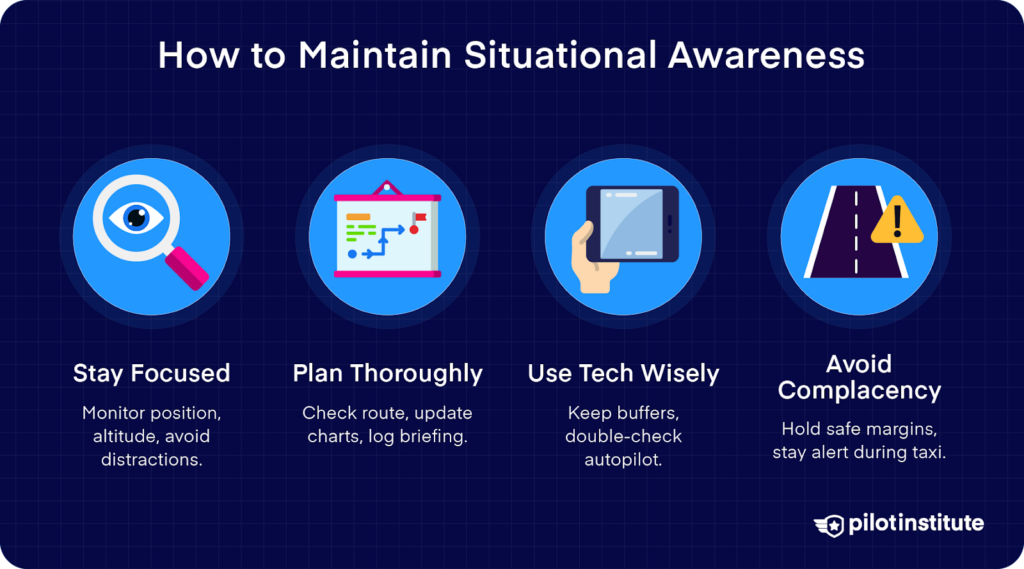
Runway incursions and airborne deviations can happen when situational awareness slips. You need to stay on top of your position and altitude and look out for what’s coming next.
This means you should try to stay alert but calm, even during long stretches of cruise flight. Don’t allow distractions to pull you away from your tasks as a pilot.
Plan Your Flight Thoroughly
You might be flying a familiar route, but don’t let that make you lower your guard.
Conditions change and sudden temporary flight restrictions (TFRs) can pop up. New FAA regulations can possibly come into play.
Before you take off, make sure to:
- Review your planned route and airspace to understand what clearances you need.
- Use up-to-date charts or download current data to your navigation system.
- Log a pre-flight briefing with Flight Service to show you’ve done your due diligence as pilot-in-command.
Doing this kind of preparation is even more important when flying under Visual Flight Rules (VFR).
Use a GPS for Extra Awareness
Modern GPS systems are incredibly helpful; they keep you informed of your location, altitude, and speed.
But just because you have one, don’t use a GPS as an excuse to push boundaries. If you’re flying close to restricted airspace, give yourself a buffer.
Even if your GPS shows you’re outside a boundary, ATC radar might show otherwise. Staying at least a mile away horizontally and 500 feet above or below controlled airspace helps you avoid pilot deviations.
Use Autopilot, but Stay Observant
An autopilot system can be a great tool for helping you to maintain your altitude and heading, especially during IFR flights.
The system gives you the ability to focus on the bigger picture. Be cautious: if you input the wrong data or don’t monitor the autopilot, you could end up with an unexpected pilot deviation.
For example, if you set an altitude of 9,300 feet when ATC only cleared you to 9,000 feet, the autopilot will follow your input without question.
By the time you notice, you might have already triggered a deviation. So, keep an eye on your systems and monitor them actively!
Create Buffers and Avoid Complacency
One of the best ways to prevent pilot deviations is to give yourself some sort of buffer or margin for error.
If ATC instructs you to maintain a certain altitude or hold position, don’t fly right on the limit—create a buffer.
The same goes for navigating close to controlled airspace. A small distraction could push you past the boundary without even realizing it.
And don’t forget, runway incursions happen on the ground, too! Make sure that you maintain a sterile cockpit during taxiing.
Keep your focus on ATC instructions, airport signs, and markings, and avoid unnecessary chatter or tasks while moving.
What Happens When You Cause a “Pilot Deviation”
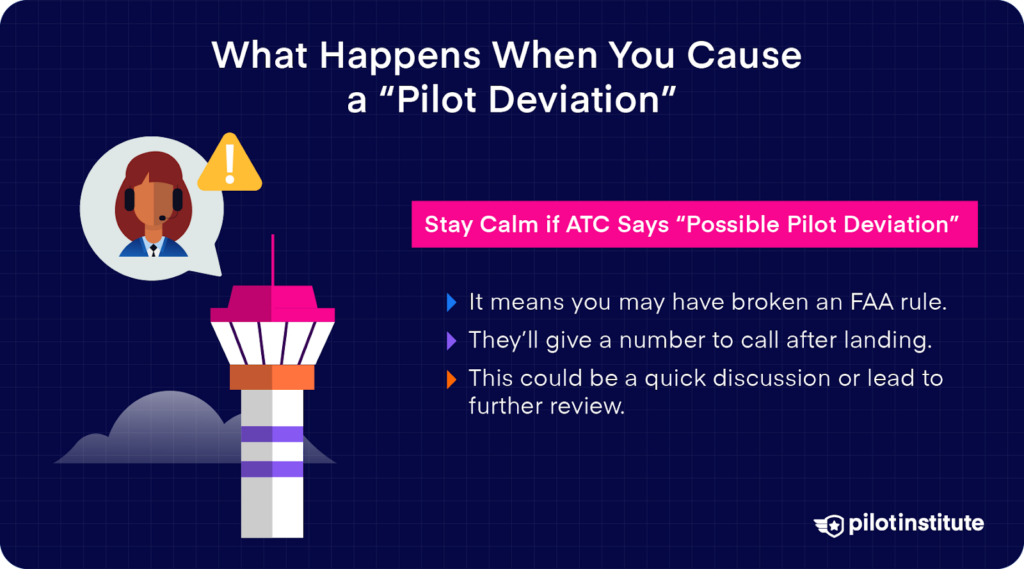
If you ever hear ATC say, “possible pilot deviation, advise when ready to copy a phone number,” just stay calm.
This means you might have broken an FAA regulation, and they want you to call after landing to discuss it.
Depending on the situation, this could be a simple conversation, or it might lead to an FAA investigation.
The FAA Pilot Deviation Enforcement Process
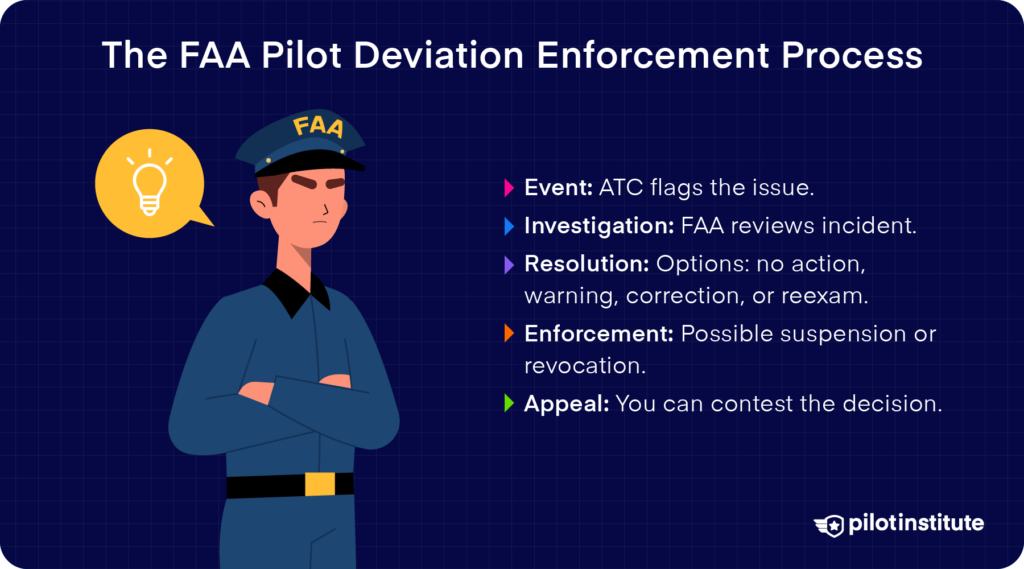
The FAA pilot deviation enforcement process consists of five phases:
- The Event
The deviation is noted by ATC, and you’re informed. - The Investigation
An FAA inspector will look into what happened, contacting you if necessary. - Resolution by FSDO
Outcomes can include a finding of no violation, a warning, a corrective action, or a request for a “709 ride” (reexamination). - Enforcement
If needed, the FAA will take further action, which could mean suspending or revoking your certificate. - Appeal
If you disagree with the findings, you have the right to appeal.
FAQs on Pilot Deviations and Runway Incursions
Q: Do pilot deviations go on your record?
A: Yes, a pilot deviation can go on your FAA record, but it depends on how serious it is. Minor incidents might not stay on there, but more serious ones can stick around for a long time.
Q: Is a pilot deviation career-ending?
A: Not necessarily. Serious pilot deviations can lead to penalties like suspending or revoking your certificate. They don’t automatically end your career.
Q: How serious is a pilot deviation?
A: It depends. Some deviations only result in a warning. Other deviations can lead to bigger penalties like fines, suspension, or losing your certificate.
Q: What happens if you don’t call the pilot deviation number?
A: Ignoring ATC’s request to call after a possible pilot deviation isn’t a good idea. Not calling back could worsen the situation, and you might face further investigation or penalties.
Q: What is the most common cause of runway incursions?
A: The most common causes are distractions. When a pilot does not follow ATC instructions and is unfamiliar with the airport layout.
Q: How many runway incursions happen a day?
A: In the U.S., about three runway incursions happen daily. This shows why it’s so important to stay alert and closely follow ATC instructions.
Q: What are examples of runway incursion categories?
A: Runway incursions can fall into categories based on their severity:
-
- Category D: Minimal safety impact with no immediate consequences.
- Category C: Incidents where ample distance or time prevents a collision.
- Category B: Higher risk, with potential for collision requiring quick action.
- Category A: Serious incidents where a collision was narrowly avoided.
- Accident: A runway incursion that results in a collision.
Conclusion
As an aviator, it is up to you to ensure that you follow all regulations and safety protocols. Now that you know what leads to pilot deviations and runway incursions, you can prevent yourself from encountering them.
As always, the best defense is thorough preparation, clear communication, and proactive awareness. And if a deviation does happen, knowing how to handle it can make all the difference.
Stay safe out there!
